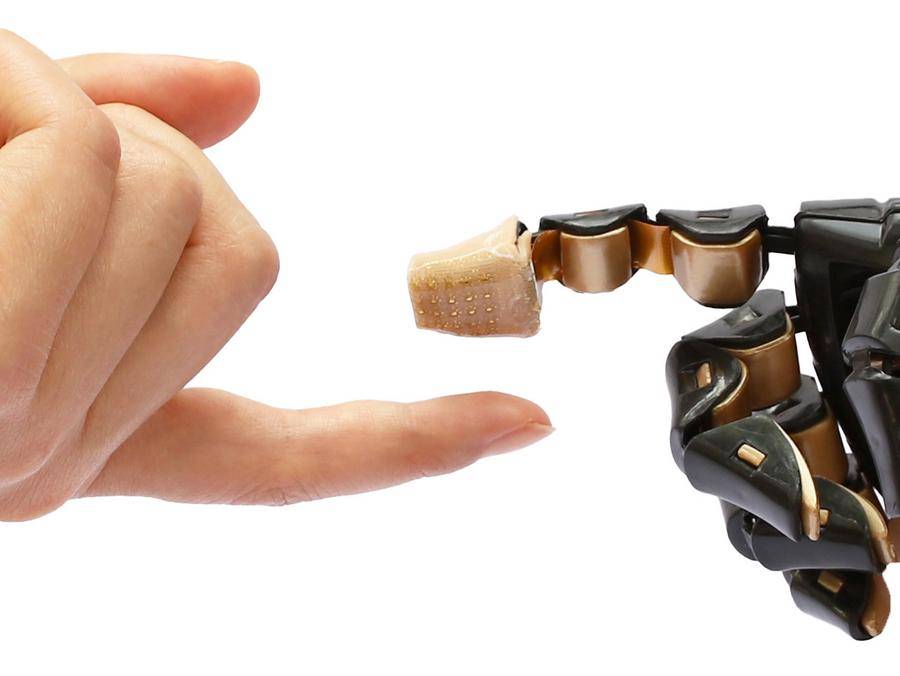In a groundbreaking achievement, a team of Chinese scientists has developed the world’s first bio-inspired electronic skin, replicating the intricate 3D structure and mechanical signals of human skin. This innovation, detailed in a recent study published in the journal Science, holds immense promise for various applications, including medical diagnostics and health monitoring.
Human skin possesses sophisticated sensory receptors that perceive external forces and strain with remarkable precision. Drawing inspiration from this spatial distribution, researchers from Tsinghua University crafted an electronic skin (e-skin) that mirrors the structure of human skin, complete with its own “epidermis,” “dermis,” and “subcutaneous tissue.”
The e-skin is engineered to decode and perceive three key mechanical signals—pressure, friction, and strain—simultaneously at a physical level. Featuring a patch comparable in size to the tip of an index finger, it comprises 240 metal sensors, each ranging from two to three hundred micrometers in size. The spatial arrangement of these sensors closely mimics the distribution of tactile receptor cells found in human skin, ensuring optimal sensitivity and responsiveness.
According to Zhang Yihui, the corresponding author of the study, the sensors gather signals that undergo meticulous processing and refinement through deep learning algorithms. This sophisticated processing enables the biomimetic skin to discern the texture and contours of objects with remarkable precision, rivaling the sensitivity of genuine human skin.
The e-skin boasts an impressive pressure position perception resolution of approximately 0.1 millimeters, further emphasizing its ability to accurately perceive tactile stimuli. This level of sensitivity opens up a multitude of possibilities for its integration into various applications, particularly in the field of healthcare.
One potential application is the integration of this innovative e-skin into the fingertips of medical robots, enabling precise early-stage diagnostics and interventions. By equipping medical robots with this advanced sensory technology, healthcare professionals can enhance their ability to perform minimally invasive procedures and deliver targeted treatments with unparalleled accuracy.
The e-skin holds promise as a versatile health monitoring tool, capable of real-time monitoring of vital health metrics such as blood oxygen saturation and heart rate. When used as a band-aid, it can offer continuous monitoring and immediate feedback, revolutionizing the way vital signs are tracked and managed, especially in clinical settings and remote patient monitoring scenarios.
The development of this bio-inspired electronic skin represents a significant leap forward in the field of wearable technology and biomedical engineering. Its potential to revolutionize medical diagnostics, healthcare delivery, and health monitoring underscores the importance of interdisciplinary research and innovation in addressing pressing healthcare challenges.
As researchers continue to refine and expand upon this technology, the possibilities for its applications are virtually limitless. From enhancing prosthetic limbs to enabling more immersive virtual reality experiences, the bio-inspired electronic skin holds the promise of transforming various aspects of human-machine interaction and improving quality of life for countless individuals worldwide.




